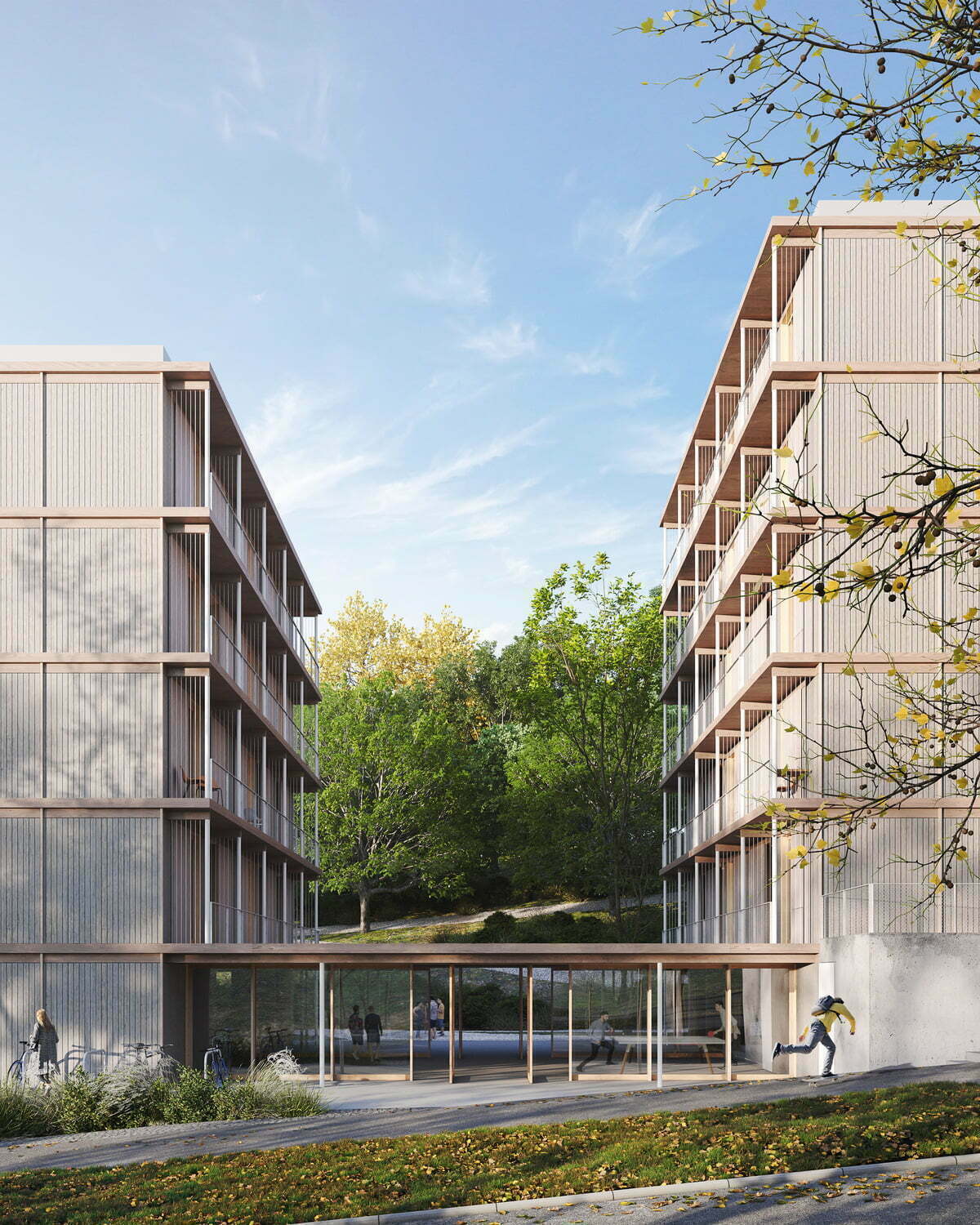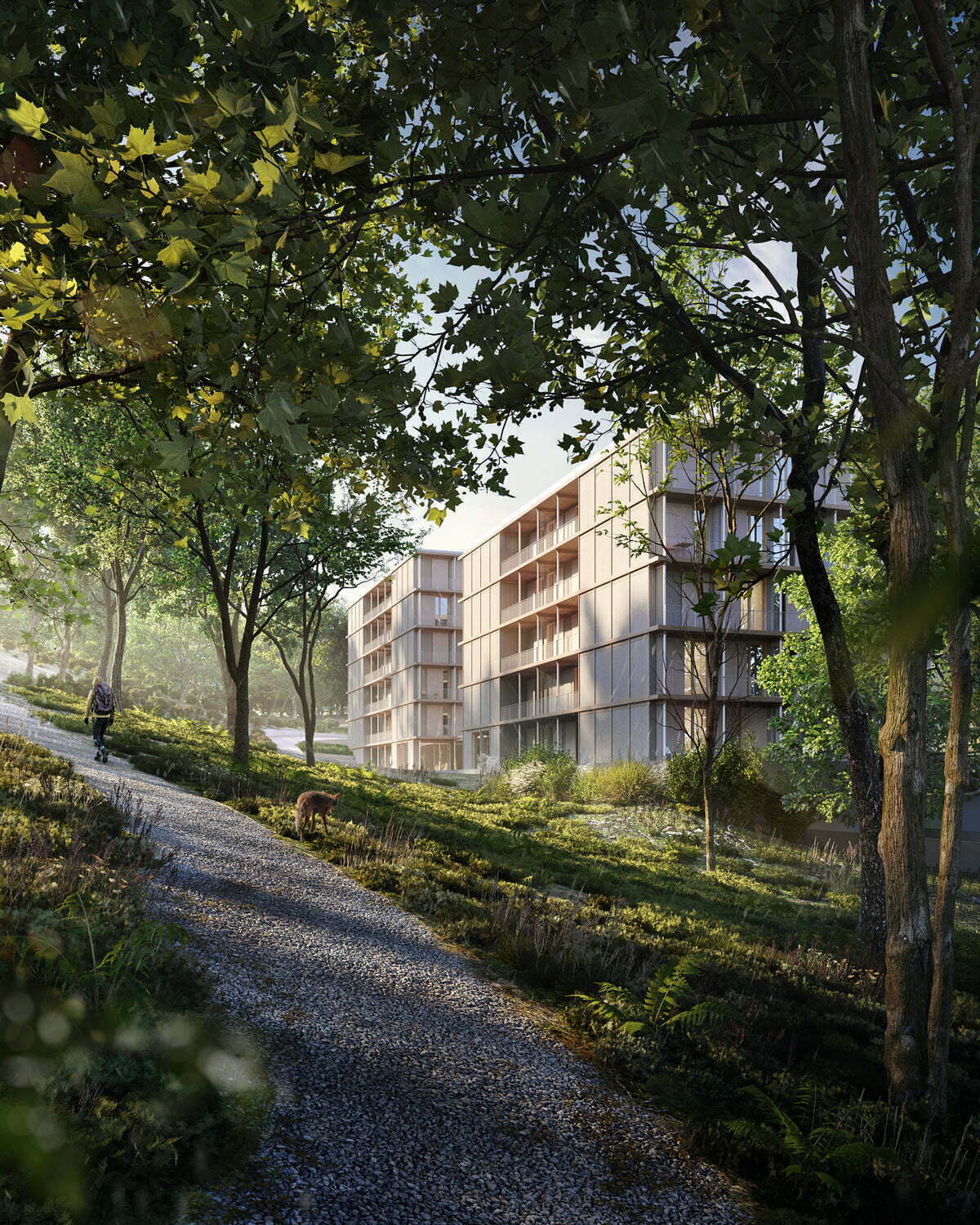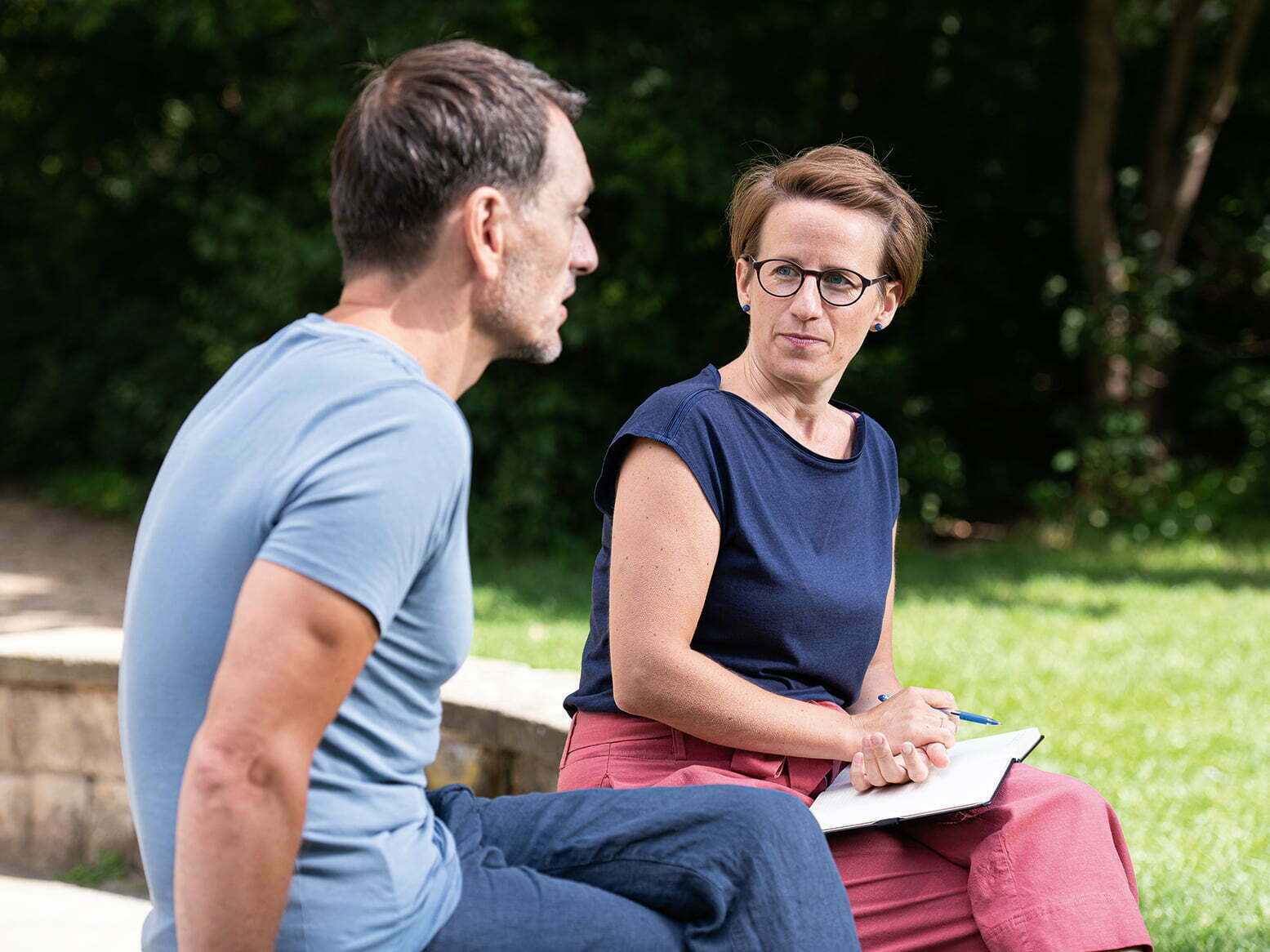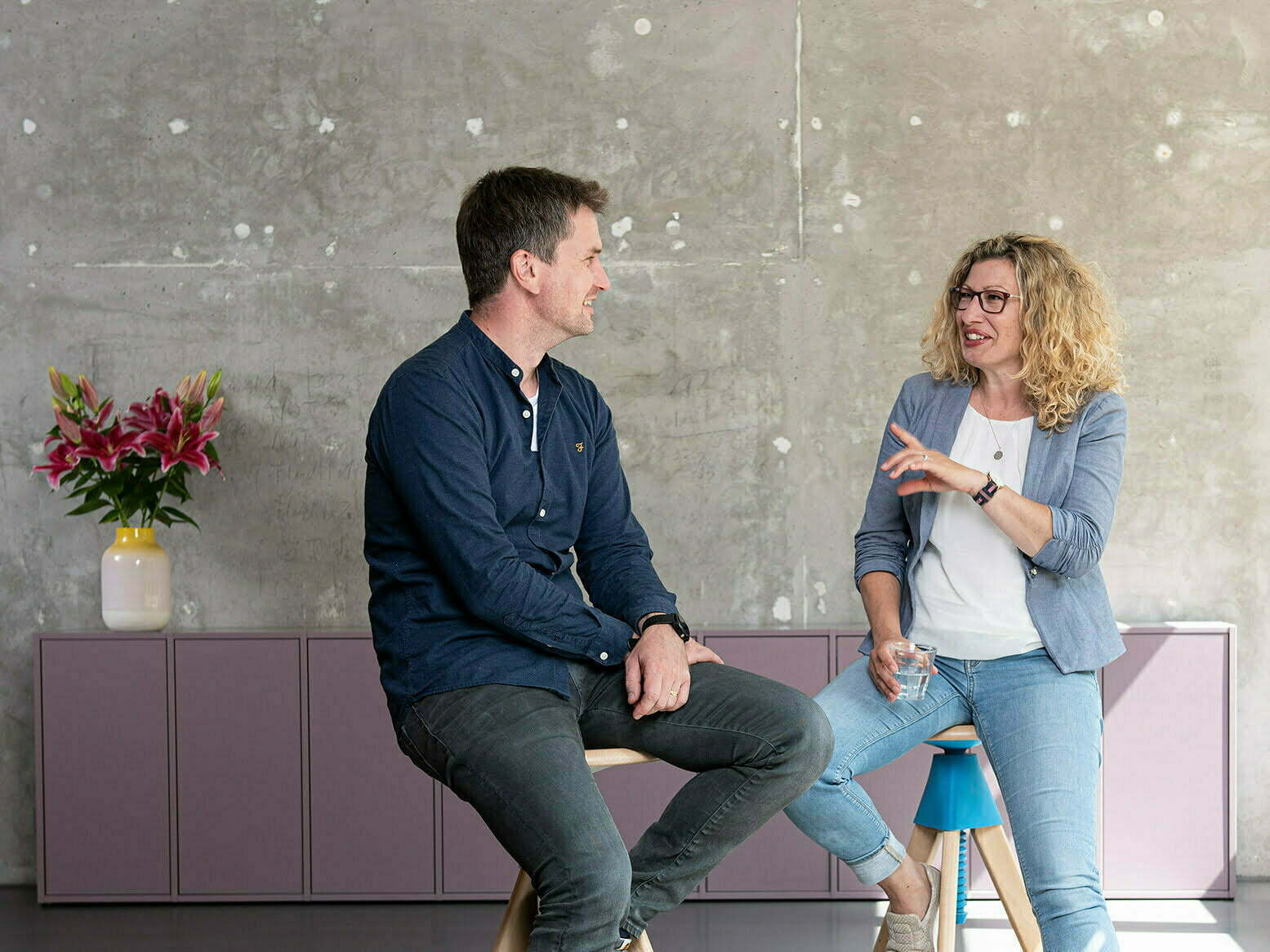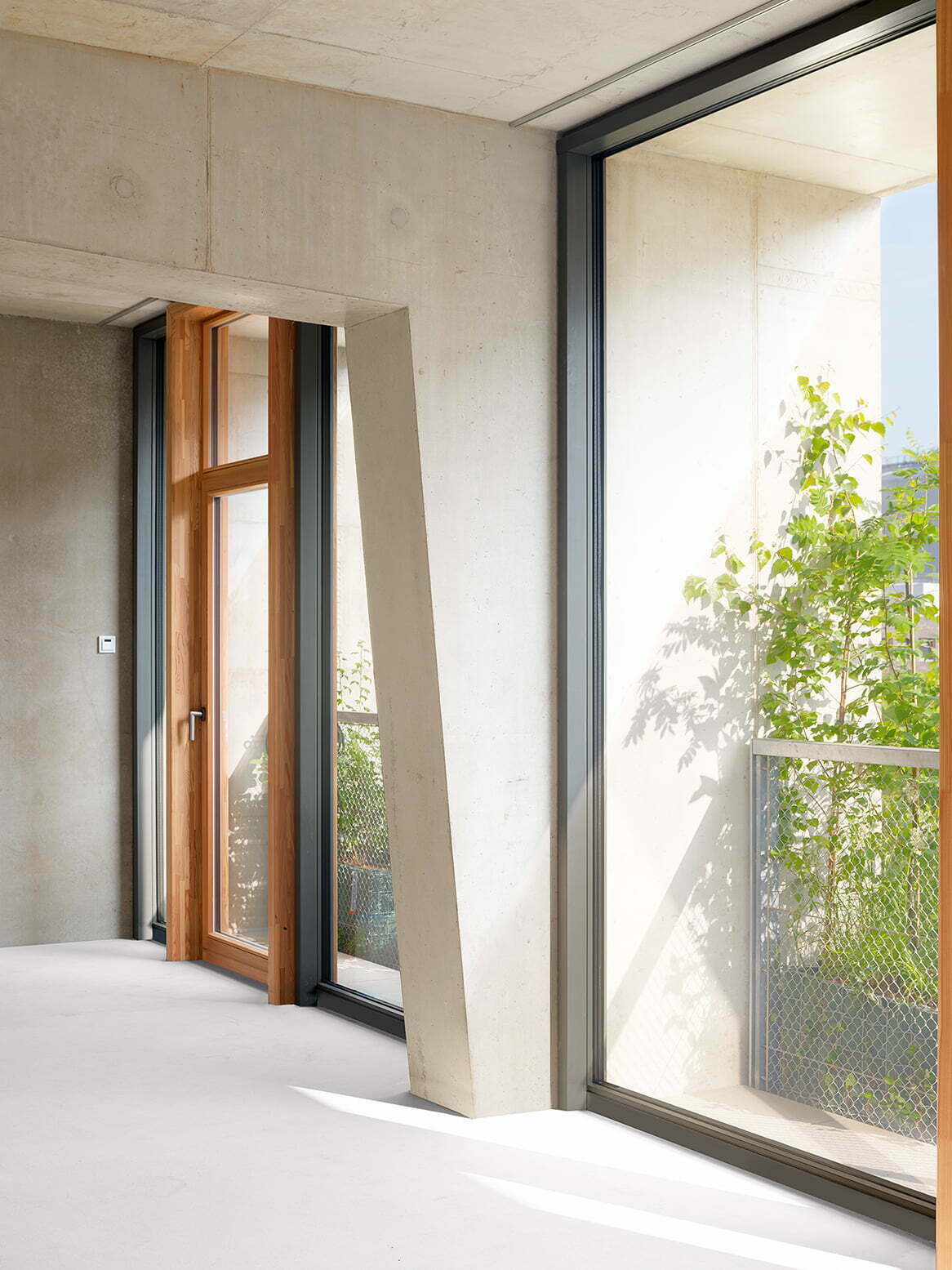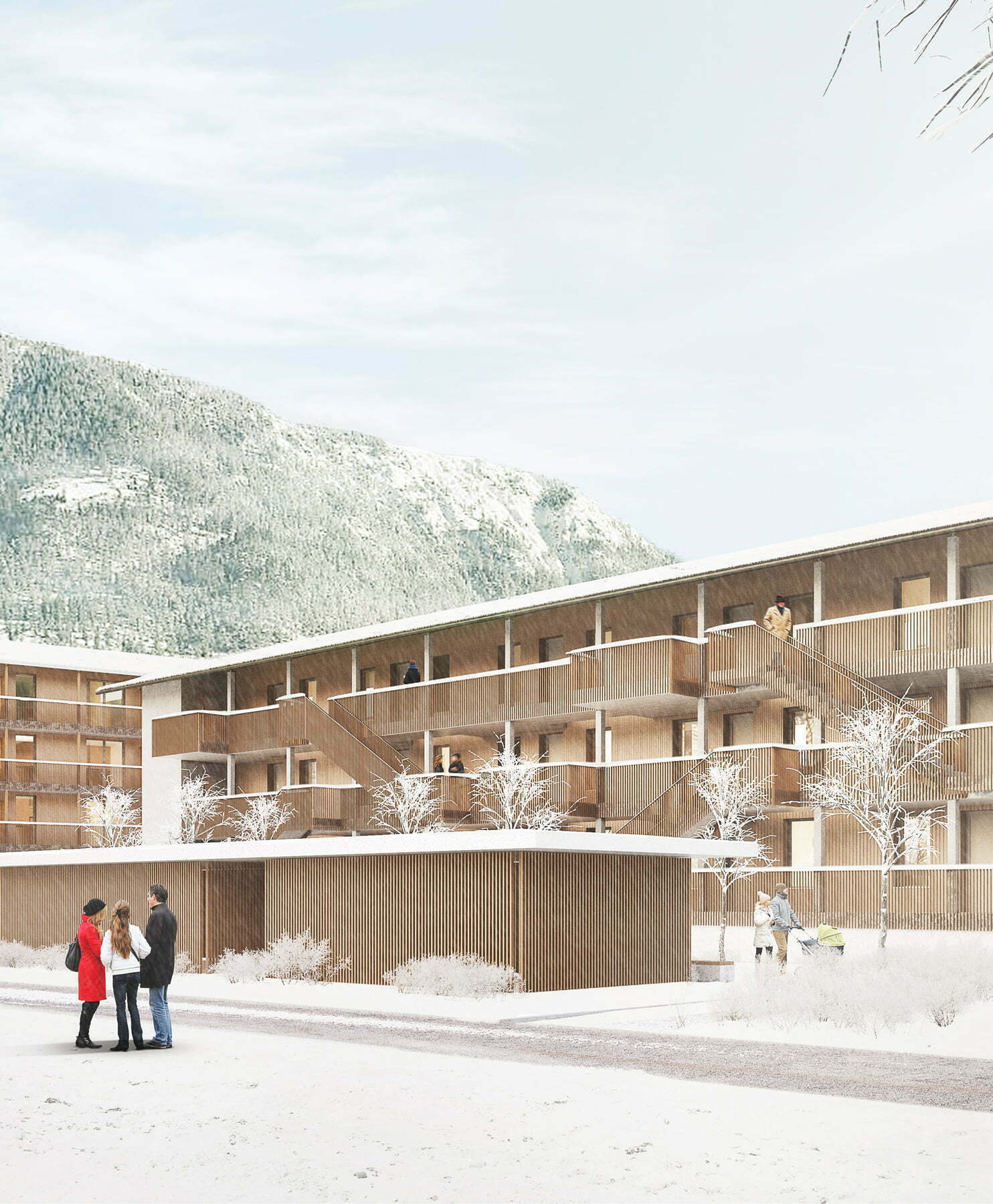
Free Thinking in Green Surroundings
Our design is about making connections. It links two buildings with an open common area. It links student life with the green surroundings. It links the neighbourhood with the park. It links places of retreat with zones of encounter. And it links students with one another.
Task and goal: Living and studying on the park
The city of Passau has one of the highest concentrations of students in Germany. For these students, the aim is to create additional housing that is flexible and comfortable. Consequently, the objective of the competition is to build a new, 120-unit residential complex for students on the edge of the municipal park Kainzenhof. From a spatial point of view, the living units are divided into singles (30%), doubles (20%) and 3- and 4-person shared apartments (50%). Beyond that, sufficient parking spaces for cars and bicycles are to be located on site, along with open spaces.
The goal is to develop an economically viable and appropriate solution reflecting high design standards in terms of both urban planning and architecture. The scheme should reflect the green surroundings and facilitate living and learning with a high quality of life adjacent to the green park.
Urban design: Discreetly embedded
The building site is located in a slight hollow on the northern edge of the Kainzenhof park. The site slopes downwards from west to east by about 8 metres. Opposite is residential construction with buildings up to five storeys in height. We respond to this situation by dividing the student dormitory into two structures, gently embedding them in the depression and then also reducing the height of the lower-lying building by one storey. The two buildings thus correspond in scale and size to the surrounding structures. Between the buildings, we accentuate the entrance condition on the ground floor. Not only is it the first spatial contact point for students and visitors, but it also affords a visual axis and passageway between Leonhard-Paminger-Straße and the park.
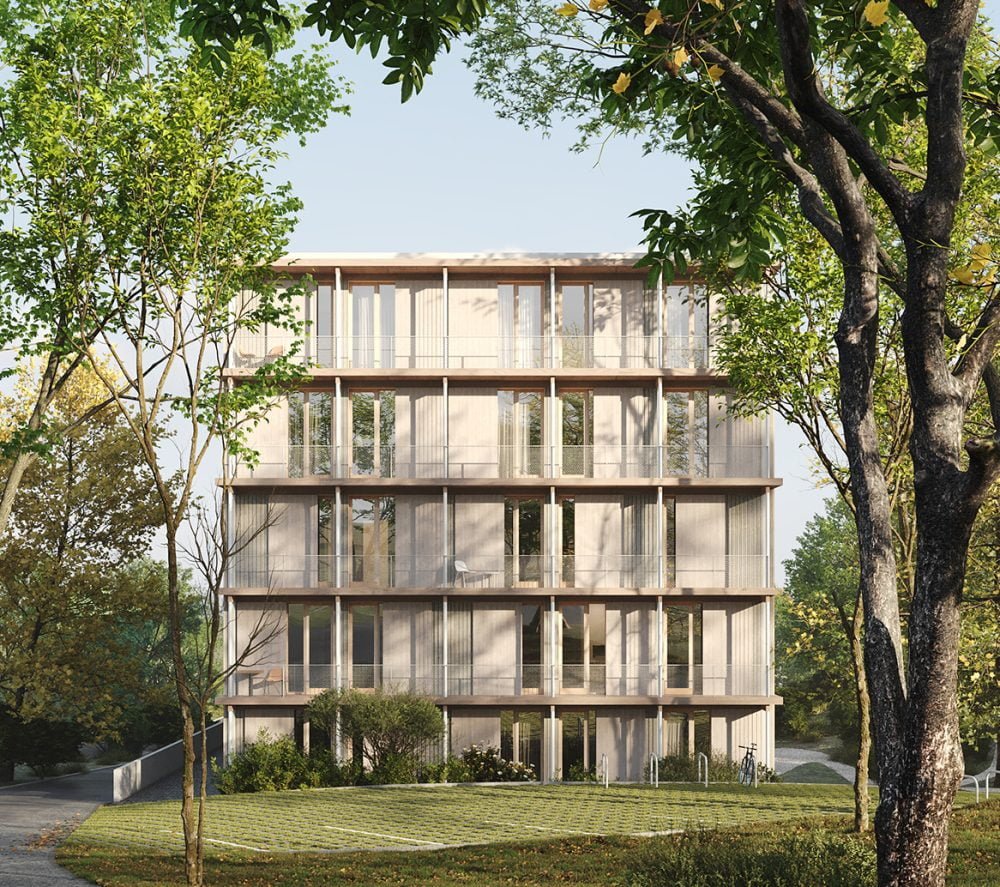
Studying in Passau
Architecture: Casual unity of individual and collective
Our plan calls for two compact structures linked by a central plinth. Within this base is the entrance area, which is the most public zone of the dormitory complex and also serves as a passageway to the barbecue area and park beyond. Here, at the centre, are the communal spaces. This principle is continued on the upper floors: communal spaces are centred to the north and south, while the more private spaces wrap around the outside of the buildings. In this way, the view is unobstructed, the connection to the park is a constant given, and wrap-around balconies allow for the enjoyment of fresh air and sunlight. There is a diverse mix of residential typologies on each floor. The apartments themselves are planned in a modular fashion, providing for a variety of living arrangements. The deliberate south/east/west orientation in both buildings allows for optimal exposure to daylight in the living spaces.
Sustainability: Not just green
The compactness of the structures and the choice of building materials demonstrate a clear commitment to resource conservation and sustainability. The roofs are extensively greened and thus retain rainwater and cool the surroundings through evaporation. Furthermore, the diversified vegetation on the roofs provides a habitat for a wide variety of species. Solar panels are installed to generate electricity and power the buildings. Paved surfaces in exterior areas – such as visitor parking lots and paths – are created with building materials that allow rainwater to seep into the ground unhindered.
